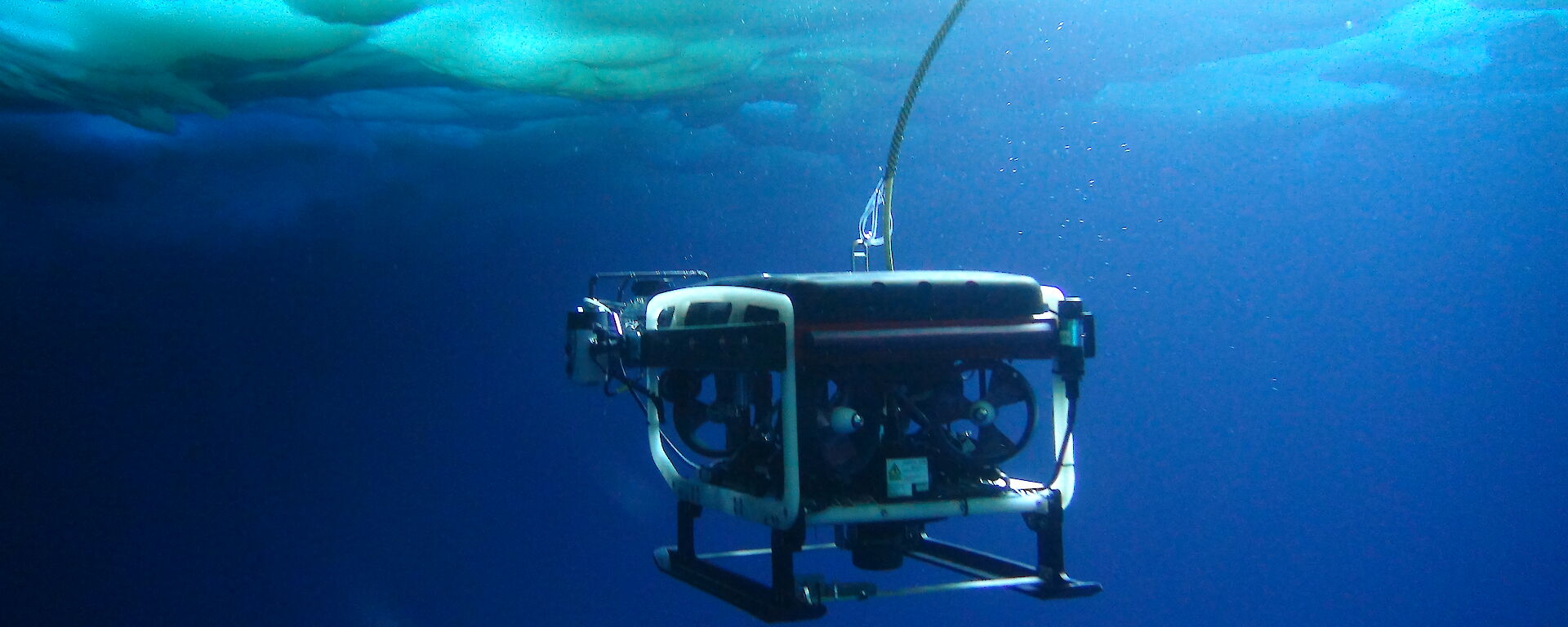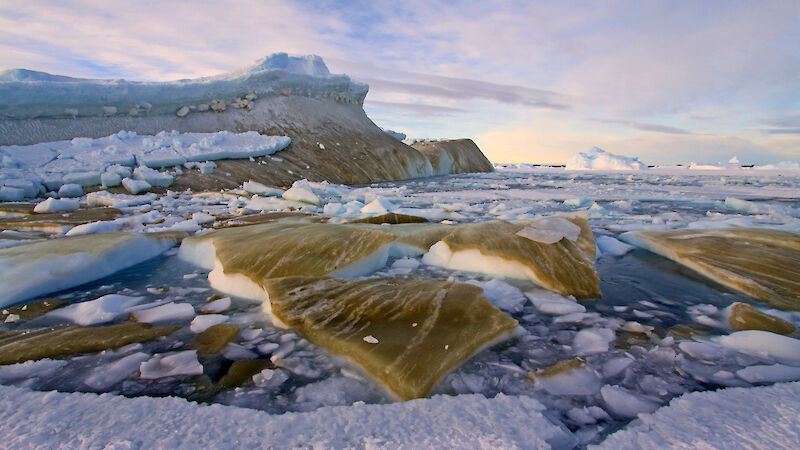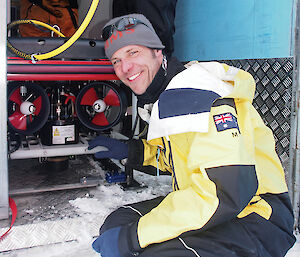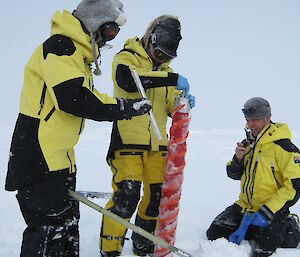A remotely operated underwater vehicle will be used to measure algae growth within the sub-surface layers of ‘fast ice’ (sea ice attached to land) at Davis this summer.
The ‘ROV’ will be operated by a team led by Dr Klaus Meiners, of the Australian Antarctic Division, and will use a range of sensory equipment to measure the under-ice structure, ice thickness, light penetration from above, and the amount and distribution of algae living in the ice.
‘We will use the ROV to carry out weekly observations of the physical and biological properties of the fast ice sub-surface in 200 square metre areas, over about five weeks during the spring-summer transition period,’ Dr Meiners said.
‘Last season we did some initial ice coring survey work with our New Zealand colleagues to develop and fine tune the method in the Ross Sea, and this season we will build on that.’
A key aim of the research is to understand primary productivity (algae growth) in the Antarctic fast-ice zone. Ice algae are an important food source for pelagic (open ocean) herbivores such as amphipods and zooplankton. These critters in turn are preyed upon by fish. As a result, ice algae growth and distribution may influence the location of suitable foraging habitat for predators, such as penguins and seals.
‘We think early season productivity in the fast ice kick-starts the food web, as algae in the ice begin growing earlier than algae in the water column,’ Dr Meiners said.
‘Understanding this process is important for developing models of fast-ice algae growth on local, regional and circum-Antarctic scales, and assessing climate change impacts on ice-associated primary production and overall ecosystem function.’
The joint Australia-New Zealand project will combine the ROV measurements with ‘point measurements’ from ice cores taken within and outside the ROV survey areas. These core samples will measure the physical, chemical and optical properties of the fast ice, the thickness and structure of snow cover on the ice, and the abundance of algae in the ice.
‘Ice and snow thickness are key factors that control the growth of fast-ice algae in the subsurface of the ice, due to their effect on light transmission through the ice,’ Dr Meiners said.
‘These ice core measurements will help calibrate and validate the ROV measurements.’
To complement and enhance the ice algae work, Australian Antarctic Division sea ice scientist, Dr Petra Heil, will operate automated fast ice ‘observatories’ at Davis. These ‘mass balance buoys’ are deployed vertically through the snow cover, fast ice and water beneath, and measure the gain and loss of sea ice over time. The buoys have been used in established locations at Australian Antarctic stations since the 1950s, providing a long-term dataset of sea ice formation and decay.
‘A key aim of this project is to develop methods to simultaneously measure sea ice physical characteristics and ice algae biomass to improve physical and biological sea ice models,’ Dr Meiners said.
‘This includes improving automated observatories which have been used successfully to collect monthly seasonal measurements of physical sea ice characteristics. In the future these observatories will be equipped with radiometers to measure the amount of light that can penetrate the sea ice. This information will be used to estimate ice algal biomass.’
The research project will also compile historical data of ice algae growth and fast-ice formation and decay from around Antarctica from ice observatories, ice cores and satellites; work that will contribute to research programs at the Antarctic Climate and Ecosystems Cooperative Research Centre.
‘The historical data will allow us to test theories on the effect of light and nutrient limitation on ice algae growth, understand the life cycle of algae across seasons, and look at patterns of algae growth in different geographic regions,’ Dr Meiners said.
‘Altogether, the data collected during this project will be used to determine the relationship between snow and ice thickness and ice algae growth, and develop a physically informed model of the seasonal development and fate of ice algae in the fast ice, at regional and circumpolar scales.’
Wendy Pyper
Australian Antarctic Division





